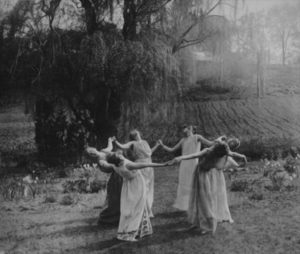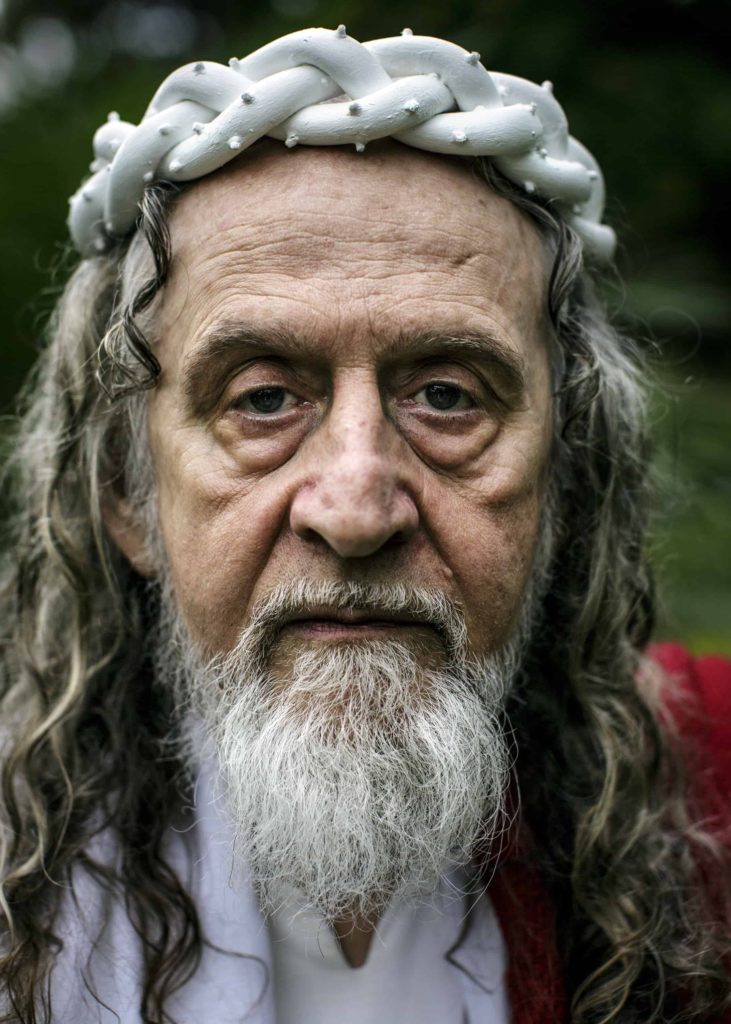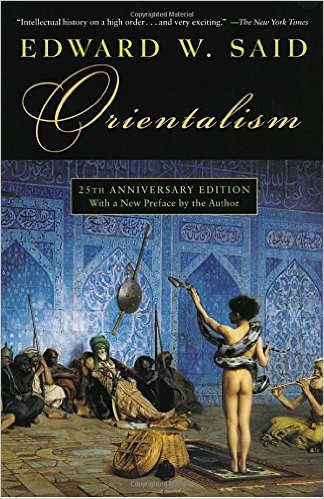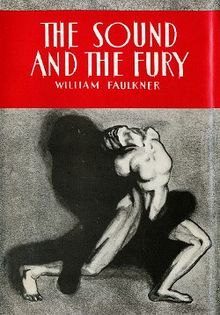In the News: Memorials, Museums, Magic and More!
A round-up of recent religion news.
Hello! And welcome to our first religion writing roundup of 2018 and the first we’ve had the pleasure of publishing on our shiny new website! (Hurray for Corey Tegeler, our intrepid and ever patient web designer.)
John Jeremiah Sullivan wrote our favorite (!) essay about religion and music, and he’s back this month with another gobsmacker: In Memoriam: Lil Peep for GQ
 For the generation coming up, the one I don’t really understand yet, this music speaks to them (to a lot of them), and maybe that’s partly why it speaks to me, because I want to understand them better. It’s awesome and awful, the world we’ve demanded they inherit—they are the children of the end of the world, the real end of the world this time, now that not just the prophets but the scientists are saying so—and the way these young people deal with that, stay human in the strangeness of having been born at that moment, seems a drama worth observing. Lil Peep, born Gustav Åhr, who was only 21 when he died last month but had been warning everyone he would die young since teenagerhood—he suffered under volcanic substance-abuse problems that he turned into performance art—was just such an end-times singer.
For the generation coming up, the one I don’t really understand yet, this music speaks to them (to a lot of them), and maybe that’s partly why it speaks to me, because I want to understand them better. It’s awesome and awful, the world we’ve demanded they inherit—they are the children of the end of the world, the real end of the world this time, now that not just the prophets but the scientists are saying so—and the way these young people deal with that, stay human in the strangeness of having been born at that moment, seems a drama worth observing. Lil Peep, born Gustav Åhr, who was only 21 when he died last month but had been warning everyone he would die young since teenagerhood—he suffered under volcanic substance-abuse problems that he turned into performance art—was just such an end-times singer.
By now, you probably know we’re pretty interested in what’s going on with witches, which is why we were extremely grateful for this latest addition to the conversation, White Magic: Though it is the subtext of savagery that animates narratives around witches, white women who take up the mantle of witch magic rarely understand themselves to be engaging in Indian or savage play by Lou Cornum for The New Inquiry
Though it is the subtext of savagery (ascribed to both Indigenous and African-descendent peoples in the Americas) that animates narratives around witches, white women who take up the mantle of witch magic rarely understand themselves to be engaging in Indian or savage play. The turn to witchcraft as a trend (rather than a practice) is conditioned by white women’s desire to obfuscate the power begotten by their whiteness. The occult is after all definitionally about power that obscures its origin. In the current fashion and fashioning of witches, the historical connections between witches and racialized savages, however sublimated, continues to magnetize the appeal. I am sympathetic to this appeal even as I am suspicious of it; it marks a desire to be contrary to the colonial project, even if it does not always enact it.
The current trend in witch infatuation marks an alliance foreclosed. In the early days of America, when accusations of witchcraft were leveled at Indians, Black people, and settlers who strayed from the strict disciplining needed to create a cohesive sovereignty of one dominant nation, it was because witches were a threat. The representations of witches that dominate contemporary American cultural consciousness—the “Surprise, Bitch” meme from American Horror Story, Stevie Nicks, people who talk about healing stones a lot—betray the role witches could have played in undoing the nation.
 Speaking of, well, sex and power and America, Jodi Eichler-Levine wrote about The long, nasty moral war over sexuality in America in her review of R. Marie Griffith‘s new book Moral Combat: How Sex Divided American Christians and Fractured American Politics for The Washington Post
Speaking of, well, sex and power and America, Jodi Eichler-Levine wrote about The long, nasty moral war over sexuality in America in her review of R. Marie Griffith‘s new book Moral Combat: How Sex Divided American Christians and Fractured American Politics for The Washington Post
“Moral Combat” is an impressive history of a massive fault line running through American history and politics: namely, sex. In eight rich chapters that span a century, Griffith traces the ridge where the tectonic plates of very different kinds of Christians have abutted, telling the “story of the steady breakdown, since the early twentieth century, of a onetime Christian consensus about sexual morality and gender roles and of the battles over sex among self-professed Christians — and between some groups of Christians and non-Christians — that resulted.”
And another professor of religious studies, Jessica Delgado weighed in powerfully on The Reckoning: Sexual harassment, #MeToo, and the pain of radical change for Public Seminar
So it is important, I believe, to remember what we are aiming for. We are aiming for a move toward wholeness. We are aiming toward reaffirming those broken friendships, those shattered social and professional networks, those damaged families — remaking them, rebuilding them in ways that affirm all of our humanity. We are aiming for a world — expressed in every corner of our lives — in which no one has to accept abuse to be employed, to create, to have an education, to be loved. This is a lofty goal, but this is really what all of these stories and the demands they imply are reaching for. Relationships or structures that include or require denial of anyone’s humanity contain a toxin that will eventually poison everyone involved. Survivors often survive, but we pay a heavy cost. We may not see the benefit of this moment of reckoning. But we speak anyway, because we know that others will. We also speak anyway, because doing so restores our humanity.
While two mainstays of The Revealer shared their takes on the other gigantic news story of the last cycle (or so) Michael Wolff‘s Fire and Fury
With Patrick Blanchfield on the Black Hole Sun God for n+1
Yet laid out in book-length prose, rather than telegraphed in 140 or 280-character bursts, the impact is like the distancing effect in Brechtian theater: we see what’s always been in front of us, but in a queasy new perspective and dilated temporality. Caught in the whiplash of headline after headline, we simply react and brace for what’s next; reading month after month as narrated by Wolff, we take a longer view, and the full insanity of what has come to constitute our new normal sinks in. We realize that Trump has always been what he is—and also that we have nonetheless always been looking for more. One of the more disturbing parts of the book is reading Trump’s transcribed speeches—off-the-cuff, rambling, incoherent, repetitive, crude. Rendered in blocky, disorienting, endless paragraphs, they are nonetheless entirely of a piece with his tweets at their epigrammatic worst. There is no between-the-lines, no secret code: it is all simply there, blatant, ugly, and stupid.
And Jeff Sharlet on The Value of Michael Wolff’s “Fire and Fury” for Bookforum
A number of my fellow journalists are saying privately and publicly that Michael Wolff’s book is no big deal—“nothing we didn’t know already.” This response makes me think of people who see some piece of modern art, a Jackson Pollock or an Ellsworth Kelly, and say, “I could do that.” Yeah, but did you?
I don’t mean to compare Wolff to a great artist, but what he’s done is triply valuable. The inside portrait of the Trump White House as workplace-from-hell may be “gossip,” but then, gossip has ever been the bile of the news—and remember, the body needs bile.
Meanwhile, Sharlet’s longtime compatriot in religion writing, Peter Manseau wrote about Father Worship: Hamilton’s New World Scripture for The Baffler
The favored avatars of this faith may change with the times, but its creed does not. The birth of the nation remains our One True God. The Revolution, the Constitution, and the Founding Fathers serve as something of a trinity establishing the culture’s unquittable cosmology and incontestable truth. Seen this way, Hamilton is less a new vision of the past than a translation of the sacred stories of American civil religion into the vernacular—in this case, the lingua franca of contemporary pop culture, a mashup of hiphop, R&B, rock, and show tune samples. And like any vernacular rendering of a text considered holy and immutable, it is at once radical on the surface and retrograde underneath—the best example in years of how a dominant worldview adapts to survive social change.
Brook Wilensky Lanford wrote about Jonas Bendiksen: Among the Messiahs for Guernica

INRI Cristo, 66 years old. INRI first had his revelation that he was Jesus Christ’s second coming in 1979. “INRI” are the initials that Pontius Pilate had written on top of Jesus’s cross. Brazil, 2014. Photograph by Jonas Bendiksen; from The Last Testament (Aperture, 2017).
If you had asked photographer Jonas Bendiksen four years ago if he ever thought he would meet Jesus, he might have given you a quizzical look. The award-winning documentarian from Norway is a self-described “skeptic,” known for his ethereal images of abandoned technology in Central Asia in Satellites (Aperture, 2006), and his epic visual exploration of people and homes around the world in The Places We Live (Aperture, 2008). The premise of his new project is a departure from the secular: Bendiksen embeds himself in the lives and communities of men who claim to be the Second Coming of Christ. That’s right—men, plural: Bendiksen encounters six of these modern day Jesuses.
Bendiksen compiled his images, the writings of the six Jesuses, and narratives of his own experience into a 400-plus-page book called The Last Testament (Aperture, 2017). Though it would be easy to approach this material with tongue planted in cheek, the resulting work is not an exposé or a parody: Bendiksen takes each of his subject’s claims at face value, and approaches them with generosity. It is designed to be as immersive an experience as Bendiksen’s own in getting to know his six subjects. I was curious about every aspect of this project: Where do you find six people who claim to be Jesus? How do you approach them and their disciples? How do they approach you? And most of all, how does someone who grew up in what he calls a “godless” home end up in a years-long pilgrimage, and with what results? The following interview ranges from the practical to the theological, the ridiculous to the sublime, and back again. And every step along the way is surprising.
Sarah Posner, too, has been on the religion beat for a spell and is always worth reading. This month she’s got the story of the Anti-Trans Bathroom Debate: How a Local Religious-Right Faction Launched a National Movement for Rolling Stone
Facing such political headwinds, Christian-right activists desperately needed a fresh strategy. Provoking fear of infringement on religious liberty would likely only gain traction among fellow believers. They soon found an alternative in Shackelford’s home state, whose largest city was, at the time, led by a lesbian Democratic mayor. There, in Houston, a small band of well-connected far-right activists was resurrecting an approach from the oldest anti-LGBTQ playbook: to transform the civic debate about homosexuality into a panic about predators. As national activists fretted at the Ritz-Carlton, Houston players had already sketched out a plan to turn voters against nondiscrimination ordinances by framing the debate as one about safety for women and girls. It proved so potent that it prompted a shift in legislative strategy across the country.
And one last Revealer, Ann Neumann‘s phenomenal Omnipresence with photographs by Elizbeth Felicella for the Virginia Quarterly Review
You can argue that black bodies should not be criminalized for being in public: Eric Garner (July 17, 2014), Michael Brown (August 9, 2014), Black Lives Matter. Tough-on-crime adherents will point out “police assassinations”: Wenjian Liu and Rafael Ramos (December 20, 2014), Blue Lives Matter. Scott Downs at LawEnforcementToday.com writes that basically everybody is “fueling the fires of misinformation with unfounded, and subjective incendiary rhetoric placing the law enforcement community in harm’s way.” It’s the cops vs. everybody. It’s cops’ safety at any cost. “Omnipresence is based on an implemented theory that police presence deters criminal behavior,” Downs writes.
Omnipresence. That’s God, everywhere at once. The all-seeing eye. That’s what NYPD officers are when sitting in their satellite office on the back side of Red Hook West, Building 1, or in a car on the sidewalk at Ninth Street. Or when two officers huddle under generator lights. Omnipresence is the generator lights, shining in windows, their aluminum bowls reflecting sulfur-bright into the bedroom of a brown family, bleaching the night of color. The lights began here in Red Hook with Sandy, Nathan says. But all over the city, there are lights.
Also reporting from New York City on matters of religion, vulnerability, and state power, Cinthya Santos Briones and Laura Gottesdiener for WNYC’s Midday about their series with Malav Kanuga about immigrants Finding Sanctuary for The Nation
It has been more than five months since Amanda Morales and her three children left behind their home on Long Island to take sanctuary in Holyrood Church in Washington Heights. The move happened quickly, in a matter of days, after Amanda learned that she would be deported to Guatemala. As she and her kids set about uprooting their lives—packing up their clothes, toys, and the pet fish—they got help from the New Sanctuary Coalition of New York City, an interfaith network of congregations and activists helping immigrants resist detention and deportation. The coalition searched out a church where the family could live. They procured sleeping bag and other necessities. They connected Amanda with lawyers, who filed for a stay of removal and a petition to open an asylum case (both were denied and are now being appealed).
We’re here in NYC also, but our new favorite commuting escape is the new podcast from Roads & Kingdoms, The Trip. There are only three episodes so far, but they’ve already talked about a memorial ceremony in Madagascar and a trip to the Peruvian Amazon to do Ayahuasca, so fans of good stories about far flung things, take note.
When we get home from our commute (whenever that might be) we cross our fingers and hope that there will be a new episode of The Good Place to watch. The season just ended, though, so at least we could turn to Laura Turner‘s recent piece, Are You There, God? It’s Me, The Good Place atThe Outline for a well-analyzed fix.
 The Good Place has succeeded where so many other television shows have tried and failed: It has become a cultural phenomena for the way it depicts religion as surprising and commonplace, funny and human. Anyone who watches the show can spot themselves in the characters — indeed, a popular quiz swept the internet a few weeks ago asking people to identify themselves as a combination of two of The Good Place’s protagonists. This is the reason for the show’s success: We all wonder what happens after we die, and we all hope that, despite our shortcomings, we will find ourselves among friends, still living in some fashion, still ourselves.
The Good Place has succeeded where so many other television shows have tried and failed: It has become a cultural phenomena for the way it depicts religion as surprising and commonplace, funny and human. Anyone who watches the show can spot themselves in the characters — indeed, a popular quiz swept the internet a few weeks ago asking people to identify themselves as a combination of two of The Good Place’s protagonists. This is the reason for the show’s success: We all wonder what happens after we die, and we all hope that, despite our shortcomings, we will find ourselves among friends, still living in some fashion, still ourselves.
Maybe we should watch some movies, too?
Though, of course, not uncritically, thanks to work like Shayna Weiss‘s critique of “They Have Their Own Language, Literally”: A Review of One of Us for In Geveb
I do not wish to list the mistakes of the filmmaker, for my concern is not solely a critique in search of authentic representation, but a critique of the style of filmmaking that flattens its rich subjects with an assumption of radical separation, accepting the insider-outsider binaries of the very community it seeks to interrogate. The filmmakers are gawkers, creating a documentary for a primarily secular audience, fascinated by the cultural other. Each character has a big reveal: Ari’s divulsion of his sexual assault, Luzer’s disclosure of an abandoned family, and the visual reveal of Etty’s face. The discovery of these secrets propels the narrative forward to maintain interest. Yet the narrowness of the filmmakers’ gaze obscures far more than it reveals, leaving the viewer only with the slightly inappropriate pleasure of discovering what is not meant to be seen, together with a sense of moral superiority.
Or read a book, maybe?
 Philip Metres wrote Same As It Ever Was: Orientalism Forty Years Later for LitHub
Philip Metres wrote Same As It Ever Was: Orientalism Forty Years Later for LitHub
Yet, despite the widening of the general frame, Orientalism still reigns; though it’s not as brazen, its subtle forms are everywhere. Consider the opening chapter of Adam Valen Levinson’s The Fine Art of Learning to Say Nothing in Arabic, recently published by W.W. Norton and appearing at this website in November 2017. The book is part travelogue and part exploration of Arabic language, written by a Jewish American. That fact in itself is fascinating, and though the first chapter doesn’t really make much of it, I imagine that a Jewish man—who may have received an extra dose of Orientalism given that he has relatives in Israel—who comes to study Arabic is a rather interesting person. Either he aspired to understand the other or spy on him, or both; either way, he’s taken a risk and I want to know more.
Also writing about the tangled history of religion and race, Judith Weisenfeld discusses her excellent new work in a conversation with Religion Dispatches, New World A-Coming: How Black Religion Helped Shape Racial Identity
I want readers to come away with an understanding of the complexity with which religion and racial identity have been intertwined for people of African descent in the United States. Religious ideas, practices, and institutions have contributed to the production and maintenance of racial categories across American history and, with these groups—which I call religio-racial movements—we have rich cases of black people challenging and reformulating racial identity through religious means.
By looking at how members of these groups understood religio-racial identity, we see that black people were not only subject to racial construction—that is, that white people produced and imposed categories and hierarchies—but contributed to racial thinking in American history, and religion was often central to these contributions. I also hope the book inspires readers to ask questions about the intersections of religion and race for other groups and at different moments in American history.
Or we could go to a museum? (or not?) Let’s take a look at Jill Hicks-Keeton‘s essay asking The Museum of Whose Bible? On the Perils of Turning Theology into History for The Ancient Jew Review
In an ironic way, their very effort to perform neutrality advances an idea about the Bible that is most at home in the evangelical Christianity of the Greens: this notion that the Bible can be unmediated is rooted in Protestant faith claims around sola scriptura, the theological belief that the Bible is the full revelation of God to humans, who need no intermediary tradition to interpret it. Today I want to integrate this critique with a focus on a different Christian theological proposition that I will argue is animating the museum’s presentation of material, and particularly of the Jewish Bible: supersessionism—that is, the belief common among (though not exclusive to) evangelicals that Christians have superseded, or replaced, Jews in the view of the God of Abraham, Isaac, and, well…Jesus.
Want to read some more superb public writing by religious studies scholars? The Immanent Frame‘s “Is That All There Is” series continues with an incredible range of work by the likes of Winnifred Fallers Sullivan on Jesus in the Bardo, Martin Kavka‘s (Tell me one thing) More than this, Omri Elisha‘s For the Looking, Jodi Eichler-Levine‘s The needle and the planetarium, Anette Yoshiko Reed‘s Knowing our demons, and J.T. Roane‘s A riot in the social order. And that’s not even all there is (in the series). Check out the whole series, it’s so good.
Alas, late last year, one of the founders of the field of religious studies died. Here Russell T. McCutheon writes In Memoriam: Jonathan Z. Smith (1938-2017) for Religious Studies News
After all, as he himself reported, he went into the study of religion “[b]ecause they’re funny…. They relate to the world in which I live, but it’s like a fun house mirror: Something’s off. It’s not quite the world I live in, yet it’s recognizable. So that gap interested me” (see the previously cited Chicago Maroon interview). Religions, then, are both familiar and strange. So in the midst of the serious and erudite (for some, even intimidating) scholar who he was widely assumed to be (by all reports, though patient, he did not suffer fools gladly—to borrow an old phrase from 2 Corinthians 11:19) there remained the mischievous but often undetected jest. (For example, that often quoted line about religion being “the creation of the scholar’s study” is a crafty double entrendre that few, I think, detect, inasmuch as it references both our work and the place in which we do it—an effect also achieved by his preference for gerunds.) But none of these were simply a bon mot; instead, they were always indicative of some larger, theoretical point; they were each an e.g., as he might have phrased it: something interesting, not in and of itself (for, as he often remarked, nothing could be interesting, or even known, if it was so unique as to be self-contained), but only inasmuch as it pointed to something else, signifying its relationship to something that we, as scholars, have seen before, such as the playful (sometimes maddeningly so) ambiguity of language and of social life.
Thank goodness for folks like the Religion and American Culture 2018 Young Scholars keeping the field moving forward.
And if you really, somehow, still need more to read, there’s hope! 3,500 Occult Manuscripts Will Be Digitized & Made Freely Available, Thanks to Da Vinci Code Author Dan Brown announced Open Culture
Lastly, how about a few laughs before we go?
This imgur thread about When academics get pissed is good for a pretty solid belly laugh
We loved watching Colin Dickey brilliantly troll Andrew Sullivan on Twitter

And lastly, we’re really glad that Hamish Ridley-Steele shared this gem from his grandmother’s video tape collection:
And now, back to trying to keep our new year’s fitness resolutions.

***
You can find previous “In the News” round-ups here.

